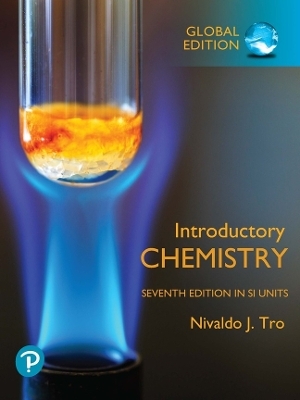
Functional Oxides
Wiley-Blackwell (Hersteller)
978-0-470-68607-2 (ISBN)
- Keine Verlagsinformationen verfügbar
- Artikel merken
Professor Duncan Bruce graduated from the University of Liverpool (UK), where he also gained his PhD. In 1984, he took up a Temporary Lectureship in Inorganic Chemistry at the University of Sheffield and was awarded a Royal Society Warren Research Fellowship. He was then appointed Lecturer in Chemistry and was promoted Senior Lecturer in 1994, in which year he became co-director of the Sheffield Centre for Molecular Materials. In 1995, he was appointed Professor of Inorganic Chemistry at the University of Exeter. Following the closure of Exeter's chemistry department in 2005, Professor Bruce took up his present position as Professor of Materials Chemistry in York. He is currently Chair of the Royal Society of Chemistry Materials Chemistry Forum. His current research interests include liquid crystals and nanoparticle-doped, nanostructured, mesoporous silicates. His work has been recognized by various awards including the British Liquid Crystal Society's first Young Scientist prize and the RSC's Sir Edward Frankland Fellowship and Corday-Morgan Medal and Prize. He has held visiting positions in Australia, France, Japan and Italy. Dr. Richard Walton, who was also formerly based in the Department of Chemistry at the University of Exeter, now works in the Department of Chemistry at the University of Warwick. His research group works in the area of solid-state materials chemistry and has a number of projects focusing upon the synthesis, structural characterization and properties of inorganic materials. Dermot O'Hare is Professor in the Chemistry Research Laboratory at the University of Oxford. His research group has a wide range of research interests. They all involve synthetic chemistry ranging from organometallic chemistry to the synthesis of new microporous solids. Duncan Bruce and Dermot O'Hare have edited several editions of Inorganic Materials published by John Wiley & Sons Ltd.
Inorganic Materials Series Preface ix Preface xi List of Contributors xiii 1 Noncentrosymmetric Inorganic Oxide Materials: Synthetic Strategies and Characterisation Techniques 1 P. Shiv Halasyamani 1.1 Introduction 1 1.2 Strategies toward Synthesising Noncentrosymmetric Inorganic Materials 3 1.3 Electronic Distortions 4 1.3.1 Metal Oxyfluoride Systems 8 1.3.2 Salt-Inclusion Solids 9 1.3.3 Borates 11 1.3.4 Noncentrosymmetric Coordination Networks 12 1.4 Properties Associated with Noncentrosymmetric Materials 16 1.4.1 Second-Harmonic Generation 18 1.4.2 Piezoelectricity 21 1.4.3 Pyroelectricity 25 1.4.4 Ferroelectricity 27 1.5 Outlook Multifunctional Materials 30 1.5.1 Perovskites 31 1.5.2 Hexagonal Manganites 32 1.5.3 Metal Halide and Oxy-Halide Systems 32 1.6 Concluding Thoughts 33 1.6.1 State of the Field 33 Acknowledgements 34 References 34 2 Geometrically Frustrated Magnetic Materials 41 John E. Greedan 2.1 Introduction 41 2.2 Geometric Frustration 42 2.2.1 Definition and Criteria: Subversion of the Third Law 42 2.2.2 Magnetism Short Course 43 2.2.3 Frustrated Lattices The Big Four 46 2.2.4 Ground States of Frustrated Systems: Consequences of Macroscopic Degeneracy 46 2.3 Real Materials 52 2.3.1 The Triangular Planar (TP) Lattice 52 2.3.2 The Kagome' Lattice 57 2.3.3 The Face-Centred Cubic Lattice 72 2.3.4 The Pyrochlores and Spinels 76 2.3.5 Other Frustrated Lattices 105 2.4 Concluding Remarks 108 References 109 3 Lithium Ion Conduction in Oxides 119 Edmund Cussen 3.1 Introduction 119 3.2 Sodium and Lithium b-Alumina 126 3.3 Akali Metal Sulfates and the Effect of Anion Disorder on Conductivity 132 3.4 LISICON and Related Phases 145 3.5 Lithium Conduction in NASICON-Related Phases 155 3.6 Doped Analogues of LiZr2(PO4)3 164 3.7 Lithium Conduction in the Perovskite Structure 175 3.7.1 The Structures of Li3xLa2/3xTiO3 181 3.7.2 Doping Studies of Lithium Perovskites 185 3.8 Lithium-Containing Garnets 187 References 197 4 Thermoelectric Oxides 203 Sylvie Hebert and Antoine Maignan 4.1 Introduction 203 4.2 How to Optimise Thermoelectric Generators (TEG) 204 4.2.1 Principle of a TEG 204 4.2.2 The Figure of Merit 207 4.2.3 Beyond the Classical Approach 210 4.3 Thermoelectric Oxides 213 4.3.1 Semiconducting Oxides and the Heikes Formula 215 4.3.2 NaxCoO2 and the Misfit Cobaltate Family 221 4.3.3 Degenerate Semiconductors 240 4.3.4 All-Oxide Modules 249 4.4 Conclusion 251 Acknowledgements 252 References 252 5 Transition Metal Oxides: Magnetoresistance and Half-Metallicity 257 Tapas Kumar Mandal and Martha Greenblatt 5.1 Introduction 257 5.2 Magnetoresistance: Concepts and Development 258 5.2.1 Phenomenon of Magnetoresistance: Metallic Multilayers and Anisotropic Magnetoresistance (AMR) 258 5.2.2 Giant Magnetoresistance (GMR) Effect 259 5.2.3 Colossal Magnetoresistance (CMR) in Perovskite Oxomanganates 261 5.2.4 Tunnelling Magnetoresistance (TMR) and Magnetic Tunnel Junctions (MTJ) 263 5.2.5 Powder, Intrinsic and Extrinsic MR 263 5.3 Half-Metallicity 264 5.3.1 Half-Metallicity in Heusler Alloys 264 5.3.2 Half-Metallic Ferro/Ferrimagnets, Antiferromagnets 265 5.4 Oxides Exhibiting Half-Metallicity 266 5.4.1 CrO2 266 5.4.2 Fe3O4 and Other Spinel Oxides 268 5.4.3 Perovskite Oxomanganates 270 5.4.4 Double Perovskites 272 5.5 Magnetoresistance and Half-Metallicity of Double Perovskites 273 5.5.1 Double Perovskite Structure 273 5.5.2 Ordering and Anti-Site (AS) Disorder in Double Perovskites 276 5.5.3 Electronic Structure and Magnetic Properties of Double Perovskites 281 5.5.4 Magnetoresistance and Half-Metallicity in Double Perovskites 284 5.5.5 High Curie Temperature (TC) Double Perovskites and Room Temperature MR 285 5.6 Spintronics The Emerging Magneto-Electronics 286 5.7 Summary 288 Acknowledgements 289 References 289 Index 295
| Erscheint lt. Verlag | 16.6.2010 |
|---|---|
| Verlagsort | Hoboken |
| Sprache | englisch |
| Maße | 159 x 234 mm |
| Gewicht | 594 g |
| Themenwelt | Naturwissenschaften ► Chemie |
| Naturwissenschaften ► Physik / Astronomie | |
| Technik ► Maschinenbau | |
| ISBN-10 | 0-470-68607-3 / 0470686073 |
| ISBN-13 | 978-0-470-68607-2 / 9780470686072 |
| Zustand | Neuware |
| Haben Sie eine Frage zum Produkt? |
aus dem Bereich


